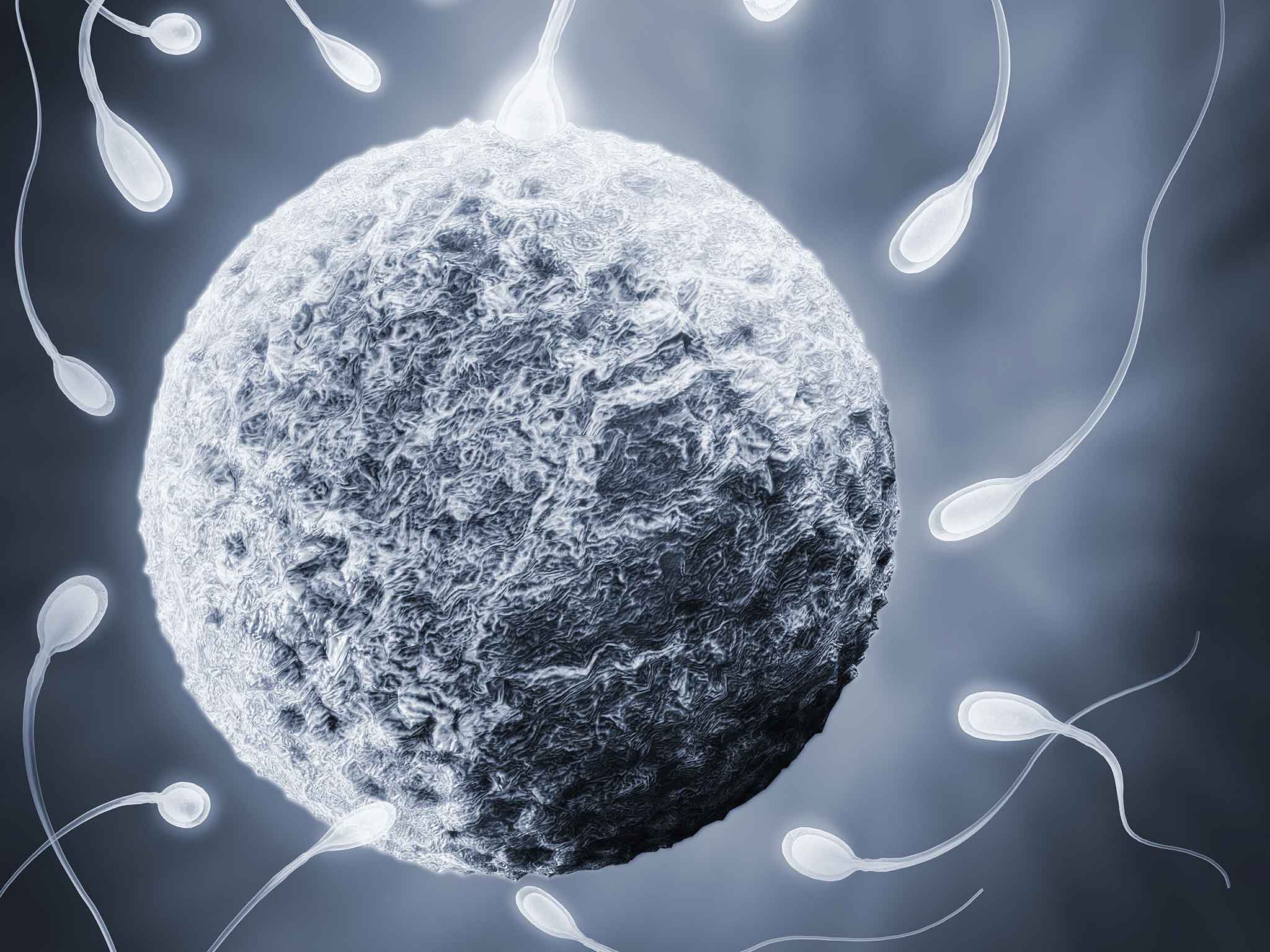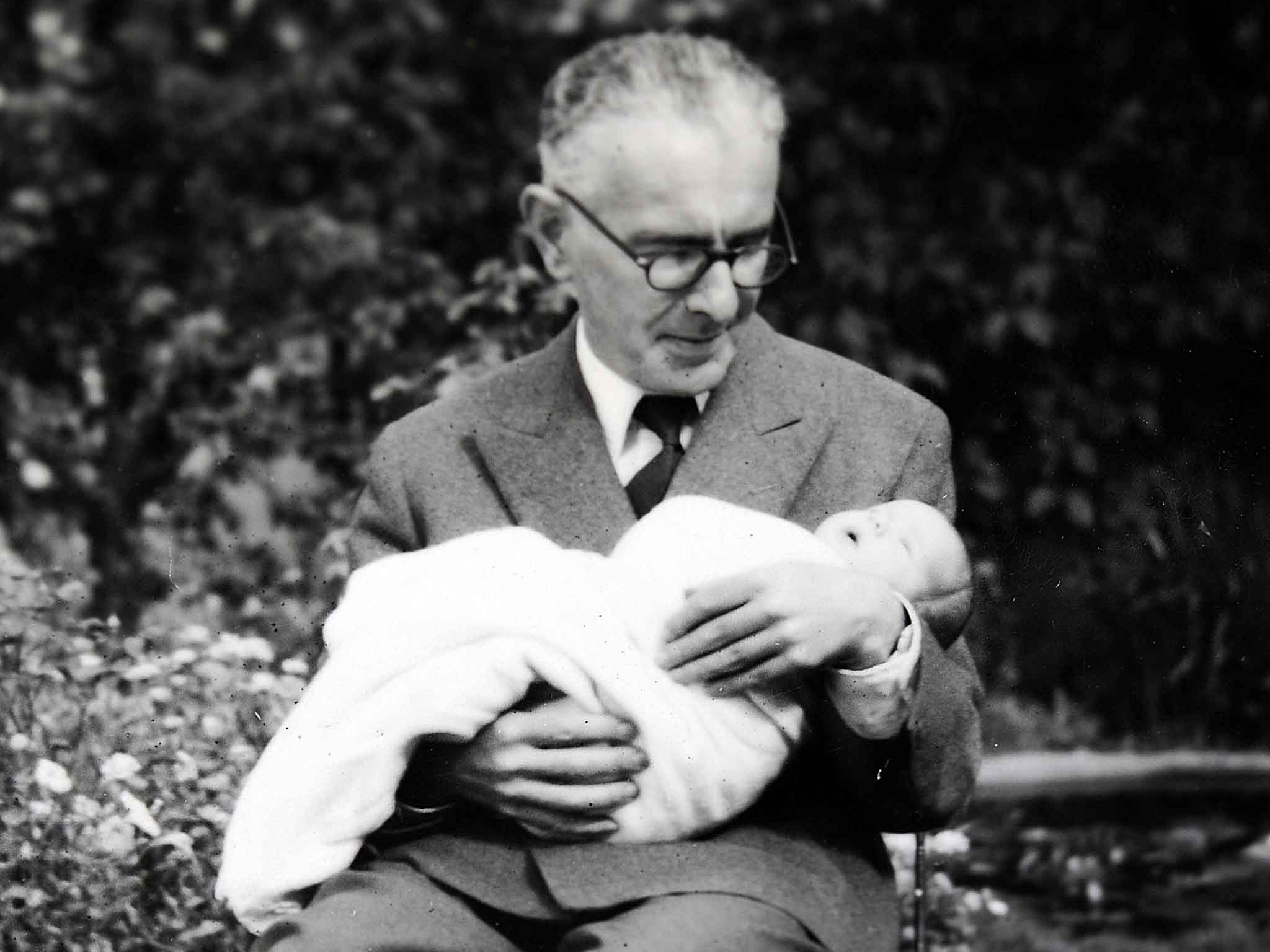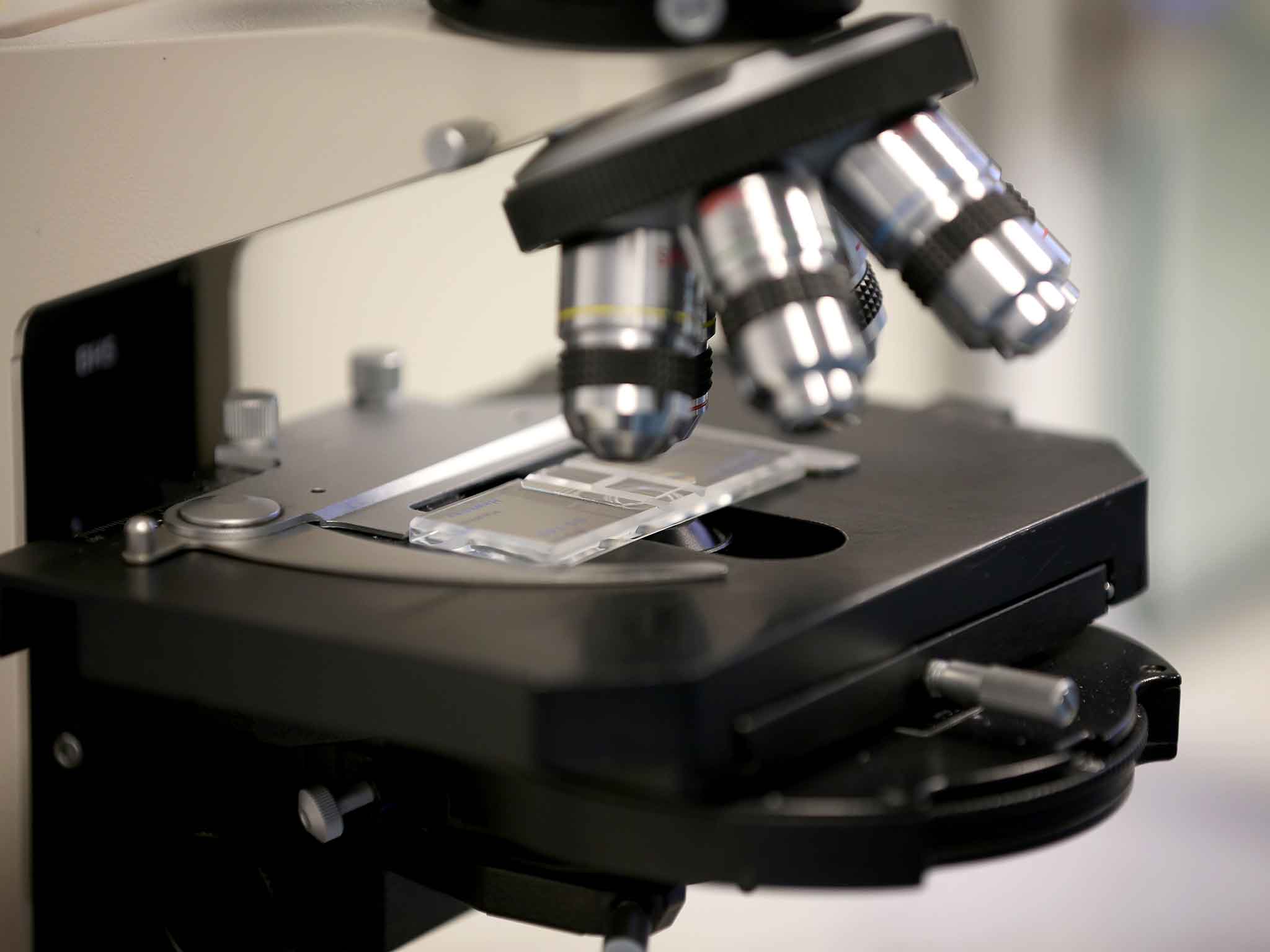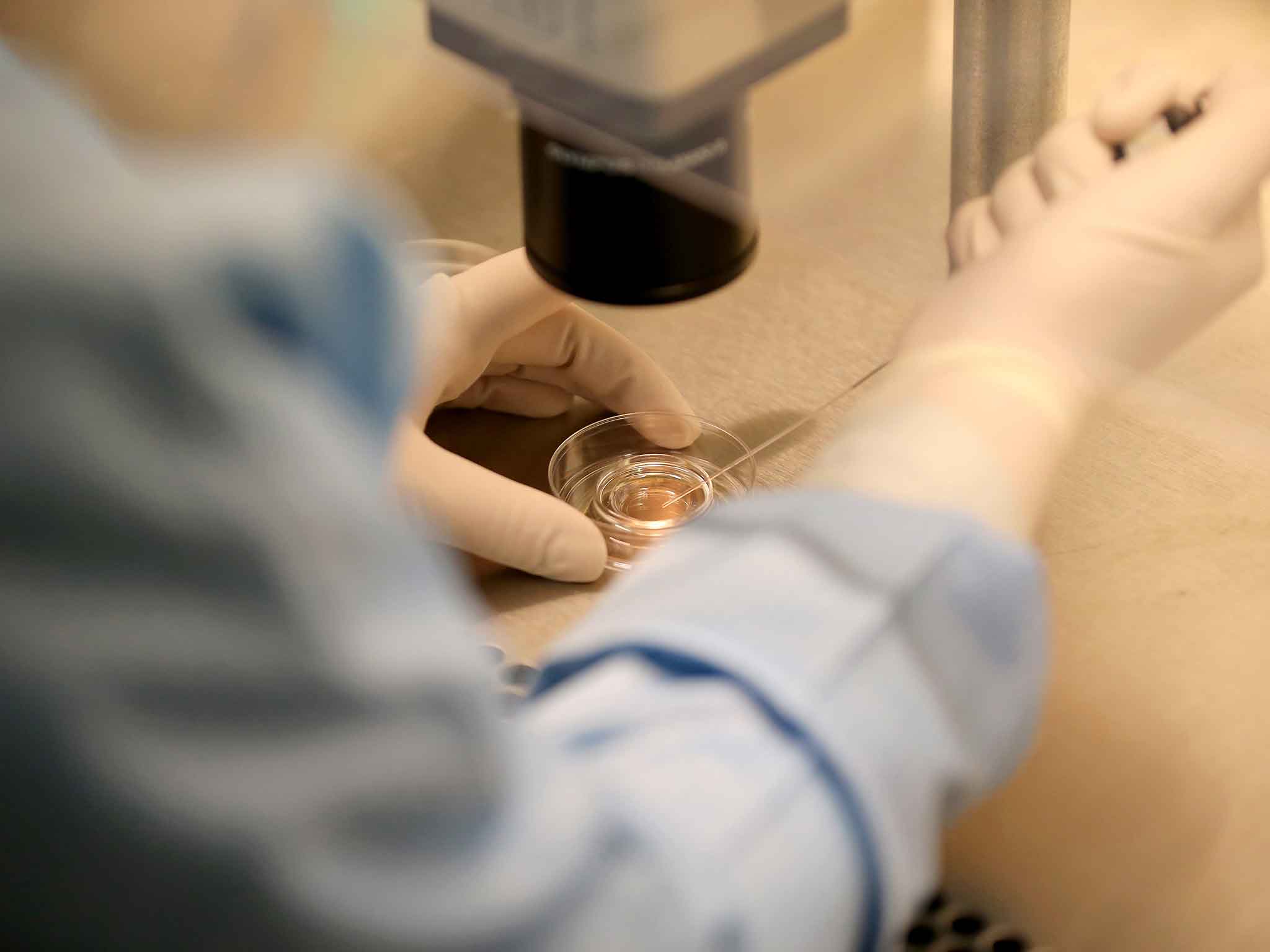Sperm donation: Inside a deeply emotive world of powerful incentives, polarised views and heated debates
It was reported last week that the national sperm bank has only nine donors

Imagine discovering that your birth certificate is a lie and that your true biological father was a sperm donor who also fathered hundreds of other children. It’s a reality for more people than you might think.
Barry Stevens, who found out he was donor conceived (DC) when he was 18, discovered through DNA tests that his biological father, Bertold Wiesner, had up to 600 children. Wiesner founded the London Barton clinic in the 1940s, promising to provide sperm donors from “intelligent stock”, and there is evidence to suggest that around two-thirds of the children born to couples using this clinic were his.
In a similarly unsettling discovery, Jo Rose learnt that at the time of her donor conception, in the early 1970s, there was a small number of medical students from Barts NHS Trust – most of them now high-profile doctors – who donated sperm time and time again up and down Harley Street, essentially cornering the market.
“In my search for my own father, I met one of them and he said that this handful of men treated the clinics as a ‘w*** bank’, and estimated that he and each of his friends have between one and 300 children,” explains Rose. Add to this the estimated thousands of people in the UK who don’t even know they’re donor conceived (historically, clinics encouraged parents to keep it secret) and you start to see a disturbing picture.

The man from Barts admitted to being deeply troubled by the biological and moral consequences of his naïve choice to treat reproductive material as on par with blood to be donated (the more the merrier), says Rose, who has also suffered emotionally from the creepy discovery that she may have scores of half-siblings out there. “Before I met my partner, I used to worry I might wind up having a relationship with one of them unwittingly, as research shows people are likely to be attracted to someone they have some genetic commonality with,” she adds.
Since 2006, UK guidelines suggest that a maximum of 10 families should use sperm from the same donor. But there have already been six cases where donor sperm created more than 10 families, and the British Fertility Society is keen to “revaluate” the limit anyway. Moreover, sperm is regularly imported from abroad (notably America and Denmark, the so-called sperm capital of the world), meaning that many donor-conceived children are still growing up with an absurd numbers of siblings.
“Even under current UK guidelines, if one donor produces four children per family, that’s still a potential of 40 offspring per donor,” says Julia Feast, research and development consultant at the children’s charity CoramBAAF, who has a special interest in people’s right to access to information about their genetic origins.
Welcome to the world of sperm donation, where this is just one of many issues that stir up deep emotions, trigger polarised views, cause heated debates and lead to everything from heartfelt campaigning to downright foolish decision making. Powerful incentives are at stake here – women desperate to have babies, the fertility industry seeking big profits and many donor-conceived offspring claiming their basic human rights are being violated.
Last week, the subject hit headlines when it was reported that only nine men are registered as donors a year after the opening of Britain’s national sperm bank. For many who are hoping to conceive using donor sperm, the news will have felt devastating. Why the shortage, demanded journalists, and what can be done about it? Others, including Kamal Ahuja, managing director of the London Sperm Bank, were bemused by the news. “It’s fundamentally untrue that there’s a shortage of sperm. London Sperm Bank, which provides sperm to 26 private and NHS clinics, has an excess,” he says. (There are 50-odd “banks” in Britain, with a few hundred donors between them.)
And then there were those who were frankly relieved at the thought of a drop in sperm donor numbers, pointing to research such as the 2010 American study, “My Daddy’s Name is Donor”, which found that “young adults conceived through sperm donation are hurting more, are more confused and feel more isolated from their families”. The report continues, “They fare worse than their peers raised by biological families on important outcomes such as depression, delinquency and substance abuse.”
Laura Witjens, chief executive of the National Gamete Donation Trust (NGDT), a government-funded charitable body whose job it is to promote egg and sperm donation in the UK, has a more nuanced view. In fact, she says, there has been a rise in donor numbers over the years, but “it has failed to keep pace with the dramatic increase in demand for sperm, particularly from lesbian couples and single women”. Indeed, according to the Human Fertilisation and Embryology Authority (HFEA), between 2010 and 2011, there was a 24 per cent increase in the number of lesbian couples undergoing donor insemination. “Then there’s the fact that, whilst many clinics do have enough sperm, many NHS patients, particularly those in certain geographical areas, can face a waiting list of over a year – longer still, if they’re from an ethnic minority.”
Witjens – an egg donor herself, who was attracted to the industry after feeling, even as a young woman, that she’d have done “anything illegal, immoral or unethical to have children” – says the lack of equal access is the very reason the national sperm bank, of which she is also chief executive, was set up last year. Based at the Birmingham Women’s Hospital and funded by the Department of Health, its aim is to provide a central store of sperm for both private and NHS clinics so that they no longer have to buy from overseas and so that fewer women resort to alternatives (more of which later).
Although Witjens admits that nine sounds a paltry figure, she says that they only need 13 to break even financially by March 2016.
“And it’s important to bear in mind that for 13 donors whose sperm we can actually use, that means testing the sperm of 130, and to test 130 means reaching hundreds or thousands more because many drop out during the process.” Witjens believes there are four obstacles currently preventing more men coming forward. “First, lack of awareness. We want men to think of this like blood donation – something altruistic. Second, there’s a stigma. Everyone knows that for guys to donate sperm, they are getting paid to have a w*** and many British people see that as smutty. Third, we are asking a lot from healthy men in the prime of their life, as donors have to go to clinic twice a week for three to four months, then give blood for a further six months [to check for HIV]. We also ask them to refrain from sex two days before masturbating, in order to get the best sperm. If guys aren’t put off by that, which many are, there’s the fact that for 80 to 90 per cent of them, their sperm fails. It may be fine for normal life, but this sperm has to be frozen and the thawing can kill it. Or we may find there’s something that disqualifies them – perhaps they’re overweight or they have a genetic disease in the family.”
The change in UK law in 2005, which removed anonymity for all donors and gave donor-conceived children the right to identify their genetic parents once they reached 18, is also believed to be a factor. “In the UK, you have shot yourself in both feet and knees, with such strict regulation,” believes Ole Schou, who set up the world’s largest sperm bank, Cryos International in Denmark, which exports to over 80 countries. “The fact is, most potential donors don’t want to be identifiable,” he says, explaining that in Denmark, they can choose. Also, he claims, “if you ask heterosexual couples whether they’d prefer an anonymous donor or non-anonymous, we find the absolute majority say anonymous, which is why so many go abroad. The very fact that, when they come home, they are not punished – conversely, everyone is usually very pleased for them – shows what a strange regulation it is.”
Indeed, Schou explains how he has found a loophole so that British people don’t even have to go overseas to find sperm donors with anonymity. The British rules, he explains, don’t apply if you deliver directly to people’s homes, rather than to clinics, meaning that anyone in the UK can buy sperm from him, with a home-insemination kit included in the package.

Schou (whose company once ceased taking donations from ginger-haired men due to lack of demand) compares fertility treatment to abortion in that everyone agrees it’s not a good thing; but if you don’t allow it, people either go abroad or to the grey market – in this case, anything from informal introduction services such as the website Pride Angel, which operates like a dating site, right through to unregulated online infertility forums, where donors use screen names such as bigD and offer their unscreened, untested and sometimes unsafe sperm for free. “We know it can go right, but it can also go spectacularly wrong,” says Witjens. “I’ve spoken to women who’ve met a guy, having agreed to insemination, only to wind up giving him a hand-job or sex. For some, the joy of being pregnant takes over, but others feel violated.”
Some years ago, Witjens wanted to know the real story of this grey market, so she posted as a woman looking for a donor online. “I’m Dutch and not easily shocked, but I received videos of men w***ing right through to some disturbing claims about their sperm. But women get desperate and put themselves at risk – not just themselves, but the children they may go on to have. At least with Cryos, the sperm is safe.”
Aiming to overcome such problems, Witjens is planning a new recruitment campaign, to focus on UK men having the power to change lives. “We considered appealing to male pride in the way they do in Denmark – the superman message that says, ‘Men, prove your worth, show me how good you are!’ – but if we link masculinity to fertility, are we saying men who are less fertile are less men?”
Both are extraordinarily misguided messages, believes Jo Rose, who has spent most of her adult life battling for the human rights of donor-conceived people and whose efforts were largely responsible for the UK’s 2005 ban on anonymity. What Rose wants – along with the campaign and support groups for donor-conceived people that are springing up all over the world, including Tangled Webs UK, Anonymous Us in the US and Donor Offspring Europe – is for professionals and those thinking of using donors to consider the potential emotional impact on any offspring, even those born after 2005, who will have the right to know their genetic identity.
And in this, she has the support of CoramBAAF. “Contrary to popular opinion, the 2005 law has not solved all the problems for today’s DC children,” explains Julia Feast. “There’s much more openness now, particularly among lesbian couples and single parents, but many parents still bring up their children with no intention of telling them. However, that doesn’t mean their offspring won’t pick up on something being different and many suffer because of it. In addition, these people lack their accurate medical histories, which can have and has had some dire consequences. Then there’s the fact that many find out later in life and feel totally deceived and devastated. It’s not a minority. There are lots of these stories.”
One solution is a birth registration reform, “so that everyone, not just donor-conceived people, has the right to know they have a different status,” she says. Thus, there would be two birth certificates: “A short one showing the legal parentage, which can be used for situations such as job applications, and a longer one to show if you are adopted, donor-conceived or under special guardianship. It wouldn’t even need to give the identifying information, just show where you need to ask. It’s already in place for adopted people and works well. And we know that, if parents know it’s there in black and white for children to see when they’re older, they’re far more likely to tell the truth.”
Emma Creswell, 27, has gone further. Having discovered that she was donor-conceived as an adult, she won a six-year battle last year to have the name of the man she thought was her father removed from her birth certificate altogether. “I still don’t know the identity of my biological father, so now there’s a blank. To me, it means a lot. It’s the truth. It’s who I am,” says Creswell, whose success could lead to further cases.
While many donor-conceived adults have benefited from contacting some of their genetic half-siblings (Barry Stevens is in contact with 11 of his), Tom is among the five parent-child matches made so far through the Donor Conceived Register, which aims to bring interested donor parents and children together through DNA matching. “It was amazing to meet this person in 2010 who looked like me and who had all these similar traits to me,” he says. “It explained a lot about where I came from and was a very healing process. But ultimately I wanted to find a man who wanted to be my father, and he met me more out of curiosity...”

Feast believes that we should be providing not just the register, but professional support to people like Tom, just as we do with adopted people who decide they need help or to look for their roots. She would also like to see the UK learning from countries such as Australia, where far more questions are asked at policy and practice level about whether donor conception is emotionally healthy for the family and whether children are at the heart of decision-making. “Then there’s the role of clinics,” she says.
Olivia Montuschi of the UK’s Donor Conception Network, which represents families with donor-conceived children, claims most clinics already offer at least one so-called “implications counselling” session. “But I agree that’s not sufficient,” says Montuschi, who herself has two grown-up children thanks to sperm donation. “Many people need to grieve the child they imagined they would have, and clinics should be recognising that and supporting them with that process, then promoting the importance of being open and honest so that would-be parents are ready to answer what can be some very difficult questions from their children.”
Donor-conceived people can fare well in families, she says, but studies show that those who grow up with parents who are confident, comfortable, honest and open at what they’ve done fare much better.
Witjens agrees that there’s a long way to go. “I know some clinics don’t offer any support or counselling. Just yesterday, a professional from a clinic asked me why it even matters if parents tell their children at all.”
Join our commenting forum
Join thought-provoking conversations, follow other Independent readers and see their replies
Comments